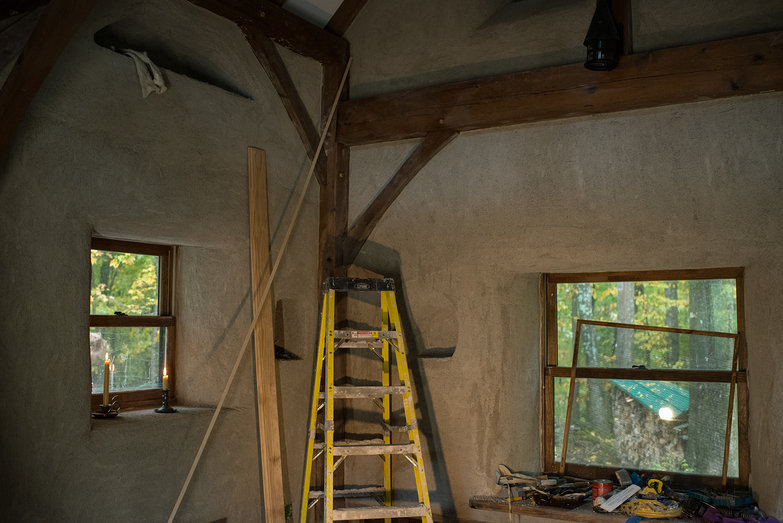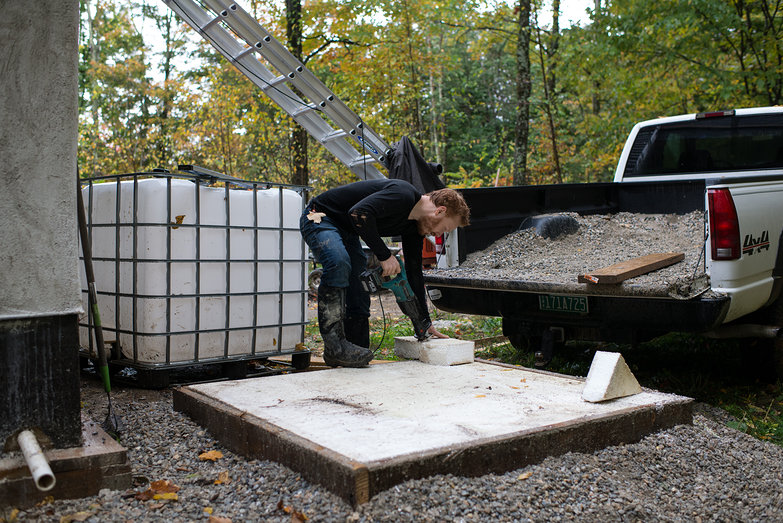Tyler:
There is a drilled well on our land, and a large clearing next to it. This area is obviously where the previous owners had planned to build a home—it is also one of the few places on our property that gets a good deal of sun. Rather than build in this clearing (which would be prudent for a number of reasons besides the proximity to the well), we've opted to save the area for our eventual and extensive gardening plans.
Instead, our cottage is situated roughly two hundred feet from the well. And, because we can never seem to do anything the easy way, it's resting on a bedrock outcropping. As best I can tell, getting a frost-protected water line to the house would require blasting a several foot deep trench between the two locations. At the moment, this is not something we can afford. Given these constraints, I have been considering above ground water storage options.
My hope is that we can keep a cistern near the house without it turning into a block of solid ice during the winter. I have spent more hours than I care to count thinking about how to make this work. Frustratingly, almost every solution seems to require copious amounts of electricity. Heat tape, incandescent light bulbs, stock tank heaters, etc, none of them are an option unless we want to run a generator full time all winter.
In the absence of a clear plan, I've decided to build tiny, well-insulated shed around a 275 gallon IBC tote, connect it to the house with insulated PEX tubing, and heat it with a tiny propane space heater when it gets extremely cold. I'm pretty confident we can keep the tank itself from freezing but I'm not so sure about the line between the shed and the house…
The challenges don't end there. We'll also need to re-fill the cistern on a semi-regular basis. Happily, this should only need to happen once or twice in the winter. Because we have a composting toilet and don't shower with this water supply, we only use about 2-5 gallons daily (the average american couple uses nearly 200).
Our well has a submersible pump that we can run with a generator, but I'm not sure if the spigot we've hooked to it will work in the winter. Nor am I sure if my plan to blow out the two hundred feet of garden hose between it and the tank with an air compressor between fillings (to prevent it from freezing) will work. I really hope we don't end up without running water in the dead of winter, but I'm prepared to deal with it. Compared to how we have been living for the last two years, we're still making giant leaps forward.
Tara:
It's a cold, rainy day, and I am spending it in our little house, cleaning old, dried splatters of plaster off of our timbers (we should have taped off the beams, but we didn't). It's not warm in here, but it is a good deal cozier than it is outside. There is so much left to do, but each step forward is a little easier now that the end is in sight.

I was honestly not expecting our house to look this good. I thought it would be… wonkier. Less polished. Instead, it's looking pretty dang professional, if I do say so myself!

And my god, the window reveals are so lovely.

After a little while, I head out into the dreary day to check on Tyler's progress with the shed he's building to store our cistern. And I find my heart swelling with pride—he's going to town, just freaking building the thing like it's no big deal. Our time spent building forms and sheds has paid off. GO SWEETIE!




